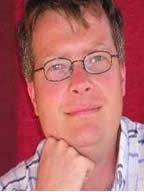Seminar 6th December 2011 4 p.m. 13/3021
Ultrasonic fields for cell manipulation, ISVR Engineering Series Seminar
Prof Martyn Hill
Engineering and the Environment, University of Southampton
- Web page
- http://www.soton.ac.uk/engineering/news/seminars/2011/12/22_ultrasonic_fields_for_cell_manipulation.page
- Categories
- Acoustics
- Submitter
- Elizabeth Roe
The ability to trap, move and position biological cells is of fundamental importance in a wide variety of life sciences applications. One means of manipulating cells is through the use of ultrasonic standing wave (USW) fields. Within such a field, gradients of pressure and velocity interact with small scatterers, such as cells, to generate time-averaged forces, in addition to the oscillatory acoustic forces. These steady-state radiation forces have a component towards the acoustic velocity maximum for a dense scatterer (relative to the surrounding fluid) and a component towards the acoustic pressure minimum for a relatively stiff particle. The resultant of these components will move the majority of scatterers, such as cells in aqueous suspension, towards the pressure nodes of a plane standing wave.
This seminar discusses the origin of the second order terms that lead to the radiation forces and describes different approaches to modelling the forces, both numerical and analytical. It is shown that the magnitude and scale of the potential wells that can be created within USWs complement alternative approaches such as optical traps and dielectrophoresis, and that USWs are particularly suitable for integration into lab-on-a-chip devices.
Several applications are discussed including :
- sample processing such as filtration and concentration
- biosensor enhancement through active cell deposition and the acceleration of bead-based assays
- fractionation of particles on the basis of size, material properties and geometry
- recent work combining ultrasonic radiation forces with other forces for TB detection (with magnetic traps) and trapping of motile microbes (with optical traps)
Venue: Building 13, Room 3021
Time: 16:00
This will be the last seminar in the series for 2011. The new series of seminars will be posted next year.
Everyone is welcome.
Contact
Name: Jonathan Lawn
Phone: +44 (0)23 8059 2294
E-mail: J.Lawn@soton.ac.uk
